Contents
Article-at-a-Glance
-
Discover which flowers and plants are irresistible to hummingbirds and why.
-
Learn how to design a garden that not only attracts but also supports hummingbirds year-round.
-
Explore the best plants for providing nectar, shelter, and continuous blooms for these flying gems.
-
Gain practical tips for creating a hummingbird-friendly environment, including garden layout and maintenance.
-
Get answers to common questions about nurturing a hummingbird haven in your own backyard.
Welcoming Wings: Crafting A Hummingbird Haven

Understanding Hummingbirds’ Attraction to Gardens
Hummingbirds, nature’s tiny aviators, are always on the lookout for their next nectar fix. But it’s not just any flower that catches their eye – or rather, their beak. These birds are drawn to certain characteristics in plants, and if you want to see them flit and hover in your garden, it’s crucial to know what they’re searching for.
Firstly, hummingbirds have a penchant for the color red. This vibrant hue is like a flashing neon sign that says “Nectar here!” But don’t worry if red isn’t your color; they won’t snub flowers in shades of orange, pink, or purple either. Secondly, they’re attracted to tubular flowers that are rich in nectar, which their long, slender beaks can access with ease. Finally, the location of these plants matters too. Hummingbirds prefer flowers that are out in the open, away from potential predators.
With this knowledge, you can start to piece together a garden that’s not just beautiful, but also a hummingbird hotspot.
Designing a Garden Layout for Maximum Hummingbird Appeal
Designing a garden to attract hummingbirds is like setting the stage for a ballet – every element has a role to play in the performance. The layout of your garden is the foundation upon which this dance of nature will unfold.
Start by planting in layers, with taller plants at the back and shorter ones in front. This not only creates a visually appealing gradient, but also allows you to place the taller, hummingbird-attracting plants where they’re easily visible. Incorporate a mix of perennials and annuals to ensure blooms throughout the seasons. Cluster the same types of plants together to create a more significant visual impact and make it easier for hummingbirds to feed.
Remember, hummingbirds need more than just nectar to thrive. They require perches to rest on, so include some shrubs or small trees nearby. If you have a larger space, consider creating a dedicated hummingbird section with a variety of plants that bloom at different times, ensuring a constant food source.
Top Flowers Hummingbirds Simply Can’t Resist
Tubular Blooms: Hummingbirds’ Favorite

“Tubular Flowers …” from www.flickr.com and used with no modifications.
There’s something about tubular flowers that hummingbirds find absolutely irresistible. These blossoms not only provide a rich source of nectar but their shape is perfectly suited to the birds’ long beaks and tongues. Here are some tubular stars:
-
Penstemon: With its long, narrow tubes, penstemon is a must-have for any hummingbird garden.
-
Foxglove: The spotted throats of these flowers guide hummingbirds straight to the nectar.
-
Columbine: These dainty flowers come in a variety of colors and offer an early-season feast.
Plant these in sunny spots where they can catch the light – and the attention of your neighborhood hummingbirds.
Salvia: A Hummingbird Magnet

“Red Salvia by adszakacs on DeviantArt” from www.deviantart.com and used with no modifications.
Salvia, also known as sage, is a diverse group of plants that comes in annual and perennial varieties. The common thread among them is their tubular flowers, which hummingbirds can’t seem to get enough of. Salvia’s nectar-rich blooms come in reds, purples, and blues, which are all strong contenders for attracting these birds. Plus, they’re easy to grow and maintain, making them perfect for both novice and experienced gardeners.
Plant salvia in a sunny spot with well-drained soil, and you’ll likely see hummingbirds visiting from spring until the first frost. Because of its long blooming season, salvia is a cornerstone plant for any hummingbird garden.
Trumpet Vine: Climbing High for Hummingbird Visits

“Orange Trumpet Vine …” from commons.wikimedia.org and used with no modifications.
Trumpet vine, or Campsis radicans, is a vigorous climber that can scale walls, fences, and trellises with ease. Its large, trumpet-shaped flowers are a beacon for hummingbirds. But a word to the wise: this plant can be aggressive, so make sure you have the space for it to spread, or be prepared to keep it in check.
Plant trumpet vine in a spot where it can climb freely, and it will reward you with a vertical display of hummingbird-friendly blooms. Just be mindful of where you plant it, as it can overtake other garden plants if left unchecked.
Bright and Bold: Colorful Attractions
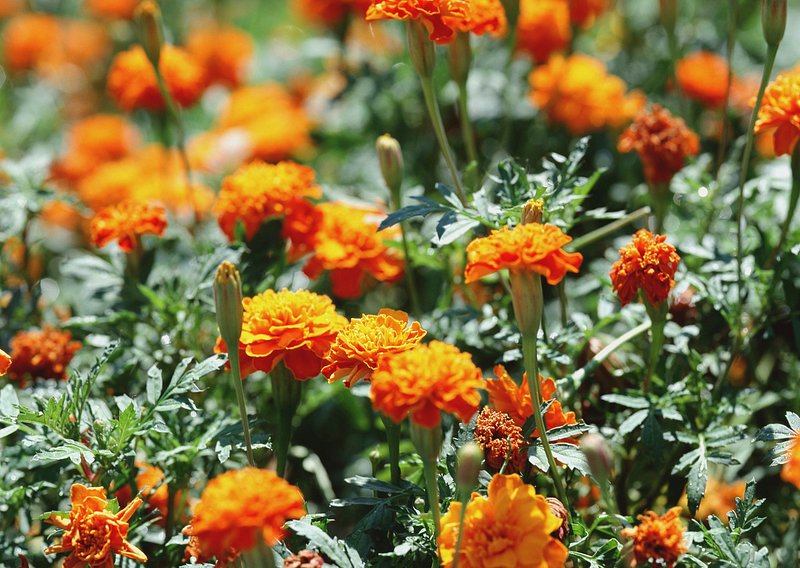
“Marigold Flower …” from www.rawpixel.com and used with no modifications.
Besides tubular flowers, hummingbirds are drawn to bold, bright colors. These vibrant signals stand out against the green backdrop of your garden, acting like billboards advertising a nectar feast. Here are some color-packed plants to include:
-
Petunias: Available in a multitude of colors, petunias are a hit with hummingbirds and gardeners alike.
-
Impatiens: These shade-loving plants bloom in bright shades of red, pink, and orange.
-
Marigolds: Their fiery blooms not only attract hummingbirds but also deter pests.
Intersperse these with your tubular flowers for a garden that’s as colorful as it is hummingbird-friendly.
Rhododendrons: Substantial Shelter
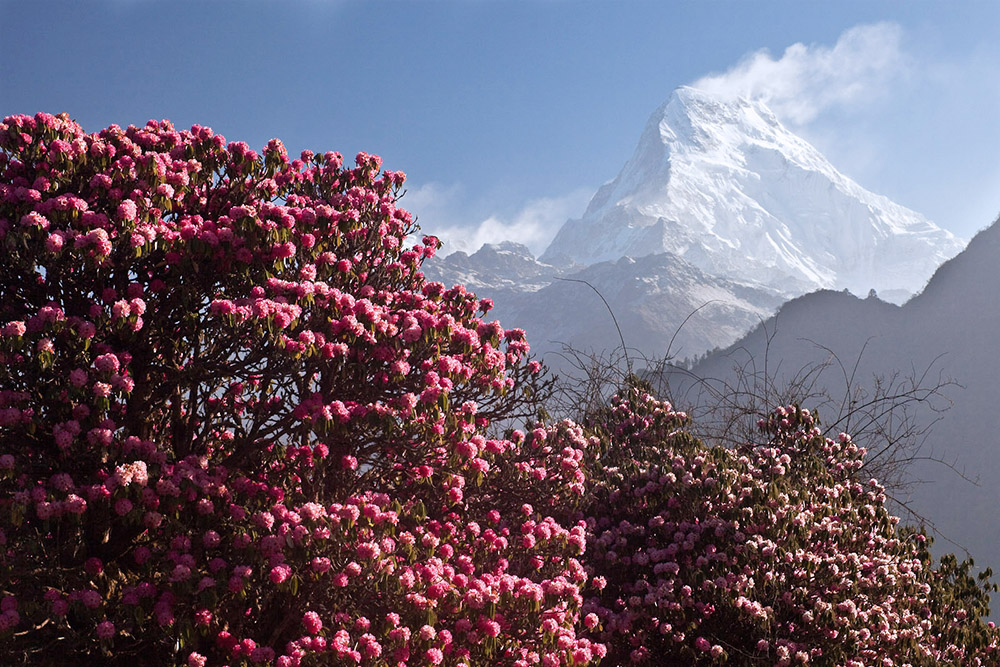
“Blooming Rhododendrons …” from www.insidehimalayas.com and used with no modifications.
Rhododendrons aren’t just a feast for the eyes with their large, lush flowers; they also offer hummingbirds a safe haven. These broadleaf evergreens provide thick foliage for hummingbirds to rest and take cover from predators. When selecting rhododendrons for your garden, opt for the nectar-rich varieties. Plant them in a semi-shaded area with well-drained, acidic soil, and you’ll create a perfect hummingbird hideaway that’s also a visual delight.
Native Plants: The Natural Choice for Nutrition

“meadow flower garden …” from pxhere.com and used with no modifications.
Native plants are the unsung heroes of a hummingbird garden. They have co-evolved with local wildlife and are well-adapted to the climate, soil, and native hummingbird species. By choosing plants like wild bergamot and cardinal flower, you’re providing a natural source of nectar that’s perfectly tailored to the needs of your local hummingbirds.
Moreover, native plants tend to be low maintenance, which is a bonus for you. They require less water and fewer pesticides, making them an environmentally friendly choice for your garden. So, when planning your hummingbird haven, be sure to include a variety of native plants to keep your feathered friends well-fed and your gardening chores minimal.
Research your region’s native flora and consult with local nurseries or extension services to find the best options for your area. Including these plants not only supports hummingbirds but also contributes to the health of your local ecosystem.
Wild Columbine: Native Nectar
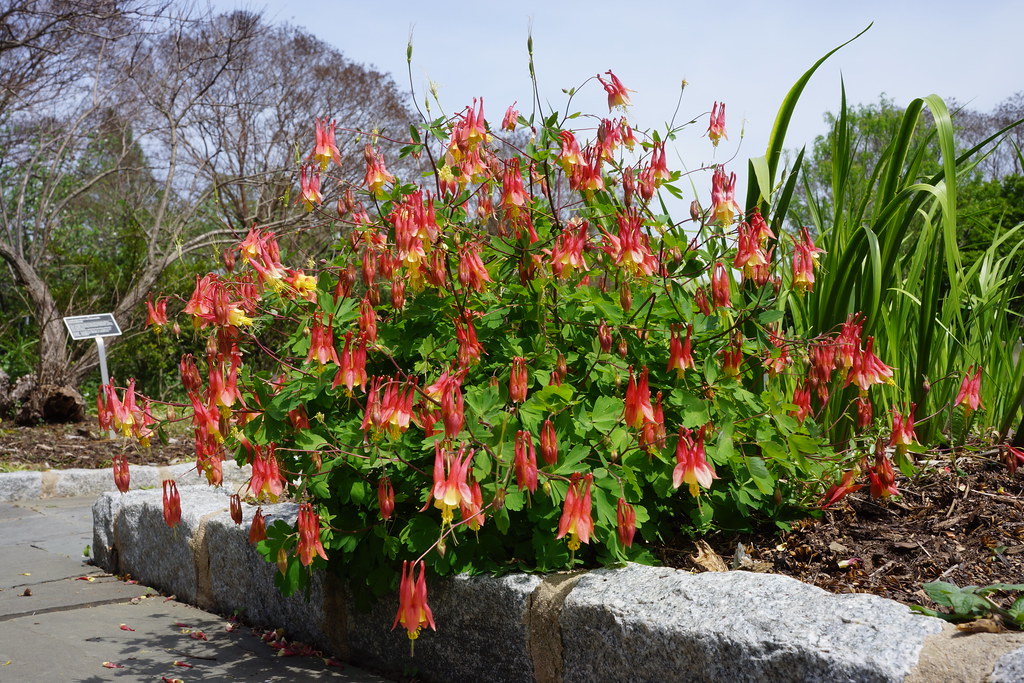
“Wild columbine …” from www.flickr.com and used with no modifications.
Wild columbine, with its unique, gravity-defying blooms, is a North American native that hummingbirds adore. Its nectar-rich spurs are perfectly shaped for hummingbirds’ feeding habits. Wild columbine thrives in partial shade and well-drained soil, and it’s a fantastic choice for adding a touch of wild beauty to your garden.
Lupines: A Wild Touch
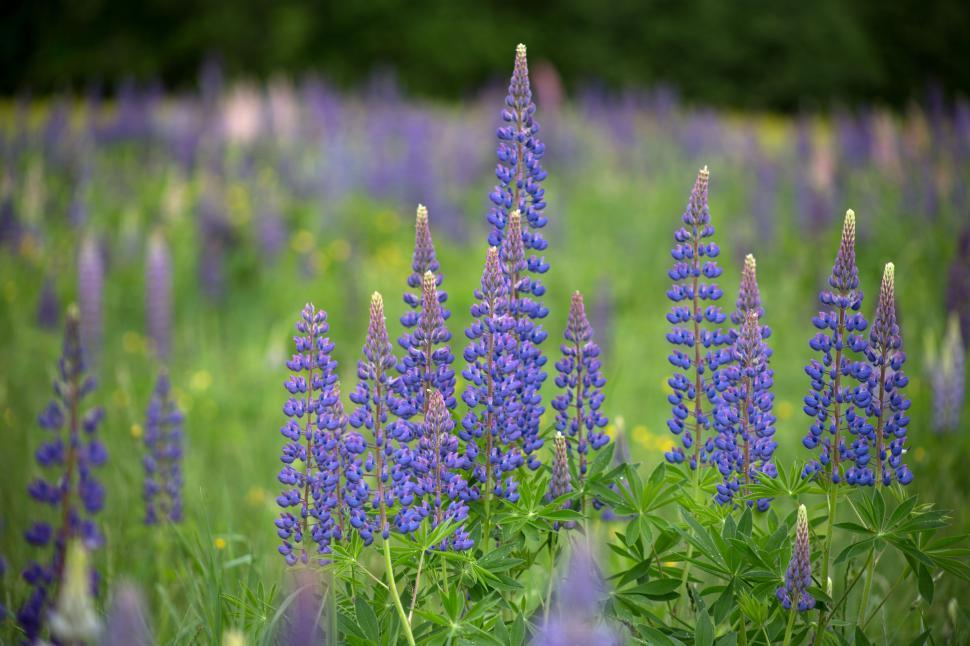
“Lupine Flowers …” from freerangestock.com and used with no modifications.
Lupines are another native beauty that can make your garden a hummingbird magnet. Their spiky blooms add vertical interest and come in a variety of colors. Lupines prefer full sun to partial shade and sandy, well-drained soil. They’re also nitrogen-fixers, which means they can improve soil health, making your garden not just a haven for hummingbirds but a better environment for all your plants.
Remember to deadhead spent lupine flowers to encourage reblooming and extend the feeding period for hummingbirds. By adding these and other native plants to your garden, you’re creating a space that’s both beautiful and beneficial for local wildlife.
Year-Round Blooms for Continuous Delight
To keep hummingbirds coming back to your garden, it’s important to provide a succession of blooms throughout the growing season. Different plants flower at different times, so with a bit of planning, you can create a garden that offers a continuous buffet of nectar from spring to fall.
Spring Stars: Beginning the Season Bright
As spring arrives and hummingbirds return from their winter migration, they’ll be on the lookout for early sources of nectar. Plants like coral bells and lungwort are some of the first to bloom and will provide much-needed sustenance for these weary travelers.
Here’s a short list of spring bloomers to get your garden started:
-
Coral Bells (Heuchera): These perennials offer delicate flowers on tall spikes, which are a hit with early-season hummingbirds.
-
Lungwort (Pulmonaria): With their speckled foliage and clusters of blue and pink flowers, lungworts are not only attractive to hummingbirds but also to gardeners looking for interesting ground cover.
-
Red Buckeye (Aesculus pavia): If you have the space, a red buckeye tree can be a stunning spring focal point and a hummingbird favorite.
By planting a mix of these early bloomers, you’ll give hummingbirds plenty of reasons to visit your garden from the get-go.
Foxgloves: Bell-Shaped Beacons
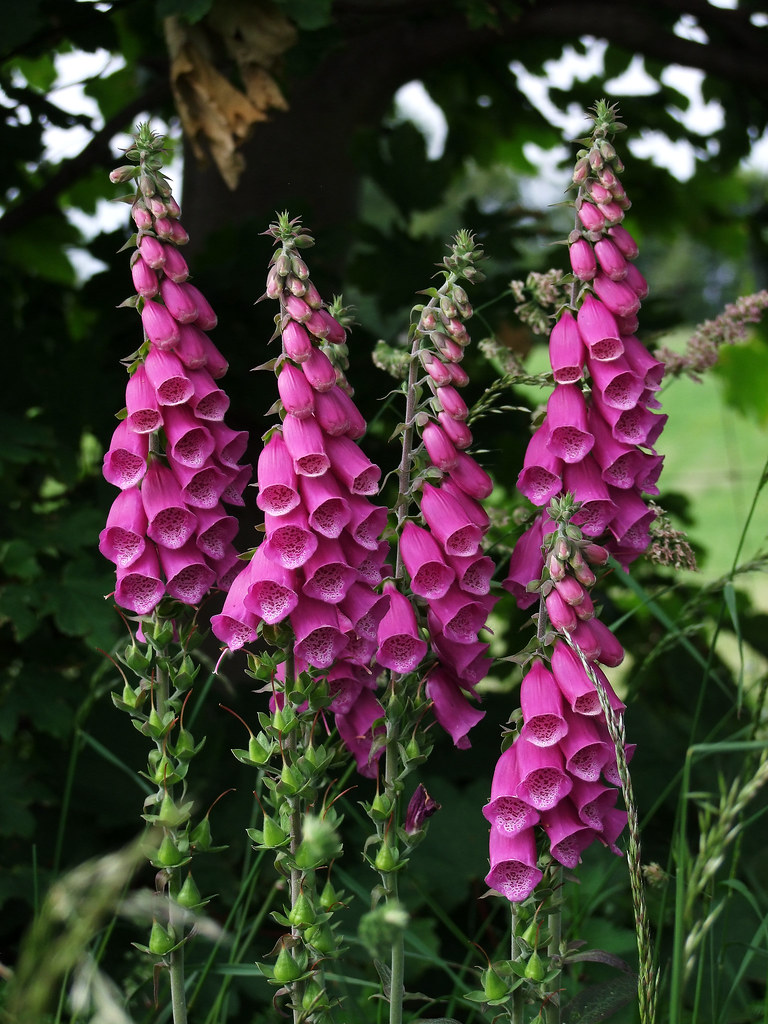
“Foxgloves …” from www.flickr.com and used with no modifications.
Foxgloves are the skyscrapers of the flower world, with their towering spires of bell-shaped blooms. They’re particularly attractive to hummingbirds because their shape makes the nectar accessible only to creatures with long beaks or tongues. Foxgloves prefer dappled sunlight and moist, well-drained soil. Plant them in the back of your borders for a dramatic backdrop that’s sure to captivate both hummingbirds and human onlookers.
Keep in mind that while foxgloves are gorgeous, they’re also toxic if ingested, so they may not be the best choice if you have curious pets or children. Always handle with care and wash your hands after touching them.
Cherry Sage: Early Treats
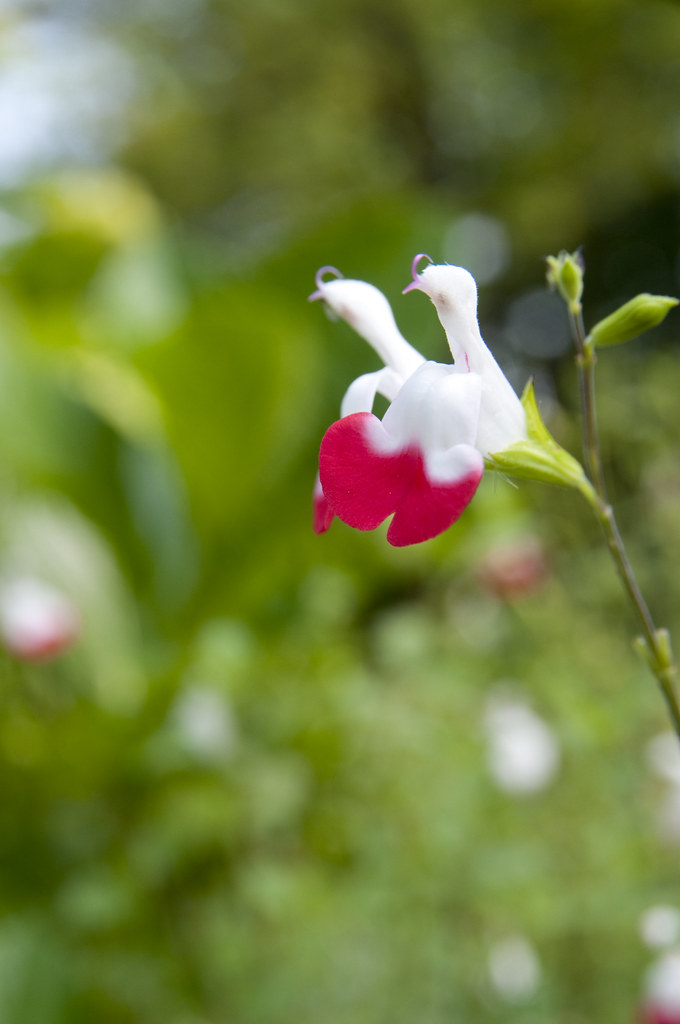
“Cherry Sage | Yuichi Sakuraba | Flickr” from www.flickr.com and used with no modifications.
Cherry sage, also known as salvia greggii, is a hummingbird favorite that offers an abundance of nectar in early spring. Its tubular flowers come in hot pinks, reds, and corals, making it a standout in any garden. Cherry sage is drought-tolerant once established, making it a great choice for gardeners looking to conserve water.
For best results, plant cherry sage in full sun and prune it back in early spring to encourage bushy growth and more flowers. It’s a hardy plant that will return year after year, providing a reliable food source for your hummingbird visitors.
And don’t forget, cherry sage’s aromatic leaves are a delight, adding another sensory dimension to your garden.
Summer Sustenance: Keeping Hummers Fed
When summer hits, your garden should be in full swing, with a riot of colors and blooms to keep hummingbirds busy. This is the time to have plants like bee balm and daylilies, which peak in the summer months.
Here’s what you can plant for a summer-long spectacle:
-
Bee Balm (Monarda): With its distinctive, shaggy flower heads, bee balm is a hummingbird favorite. It’s also a magnet for bees and butterflies, making your garden a hub of activity.
-
Daylilies (Hemerocallis): These hardy perennials come in a range of colors and offer a succession of blooms throughout the summer.
-
Butterfly Bush (Buddleja): Despite its name, the butterfly bush also attracts hummingbirds with its long, nectar-rich flower spikes.
Interspersing these with other summer bloomers will ensure that your garden is a constant source of nourishment for hummingbirds during the hottest months.
Fuchsia: Summertime Showstoppers
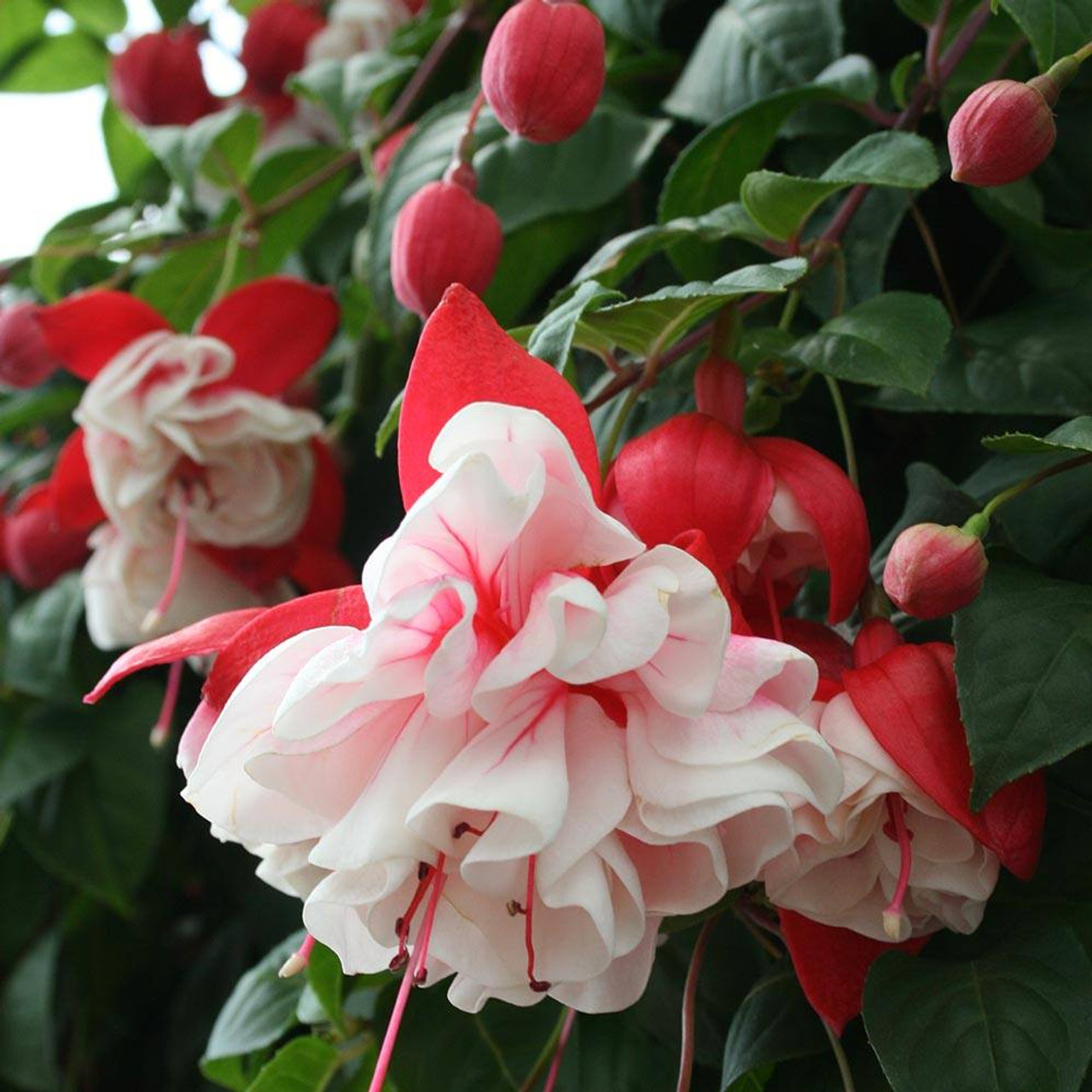
“Fuchsia Trailing Swingtime – Moss …” from mossgreenhouses.com and used with no modifications.
Fuchsia plants are like the grand chandeliers of the garden, with their elegant, drooping flowers in shades of pink, purple, and white. Hummingbirds are drawn to their unique shape and plentiful nectar. Fuchsias thrive in cooler summer climates and prefer a spot with morning sun and afternoon shade. They’re perfect for hanging baskets or as a potted plant on a shady patio, where you can enjoy the hummingbirds’ aerial acrobatics up close.
Crocosmia: Fiery Feeding Frenzy
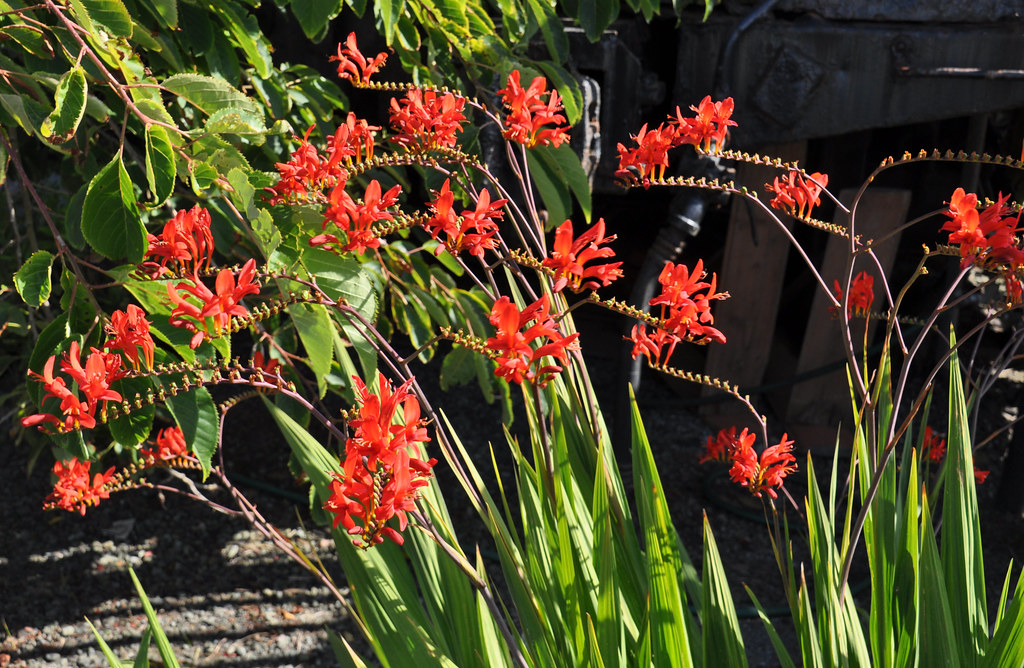
“Crocosmia …” from www.flickr.com and used with no modifications.
For a touch of the dramatic, add crocosmia to your garden. Its bold, fiery blooms stand out in any landscape, and its arching stems are perfect for hummingbirds to hover and feed. Crocosmia loves full sun and well-drained soil. Once established, it’s drought-tolerant and will return each year with a greater display of its striking flowers.
Autumn Offerings: Prolong the Pleasure
As the days shorten and the air cools, keep your garden hummingbird-friendly with late-blooming plants. Asters and sedum are excellent choices for extending the blooming season into fall.
Here are some autumn bloomers to consider:
-
Asters (Symphyotrichum): These daisy-like flowers come in a range of purples, blues, and pinks and can bloom well into the fall.
-
Sedum (Hylotelephium): With their succulent leaves and clusters of star-shaped flowers, sedums are a late-season nectar source that’s hard to beat.
-
Pineapple Sage (Salvia elegans): The bright red flowers of pineapple sage are a hummingbird favorite, and its late bloom time is perfect for migrating birds stocking up for their journey.
By including these plants in your garden, you’ll provide a last hurrah of nectar for hummingbirds before they head to warmer climates or hunker down for the winter. For more information on creating a bird-friendly habitat, check out our guide on custom garden decor for your family.
As the season transitions to autumn, it’s the perfect time to introduce Pineapple Sage into your garden. With its tubular, bright red flowers and sweet scent, Pineapple Sage is a late-season treasure that provides a vital food source for hummingbirds preparing for migration. Plus, its late blooming period helps ensure that your garden remains a hummingbird hotspot even as the days grow shorter.
Pineapple Sage: End of Season Surprises
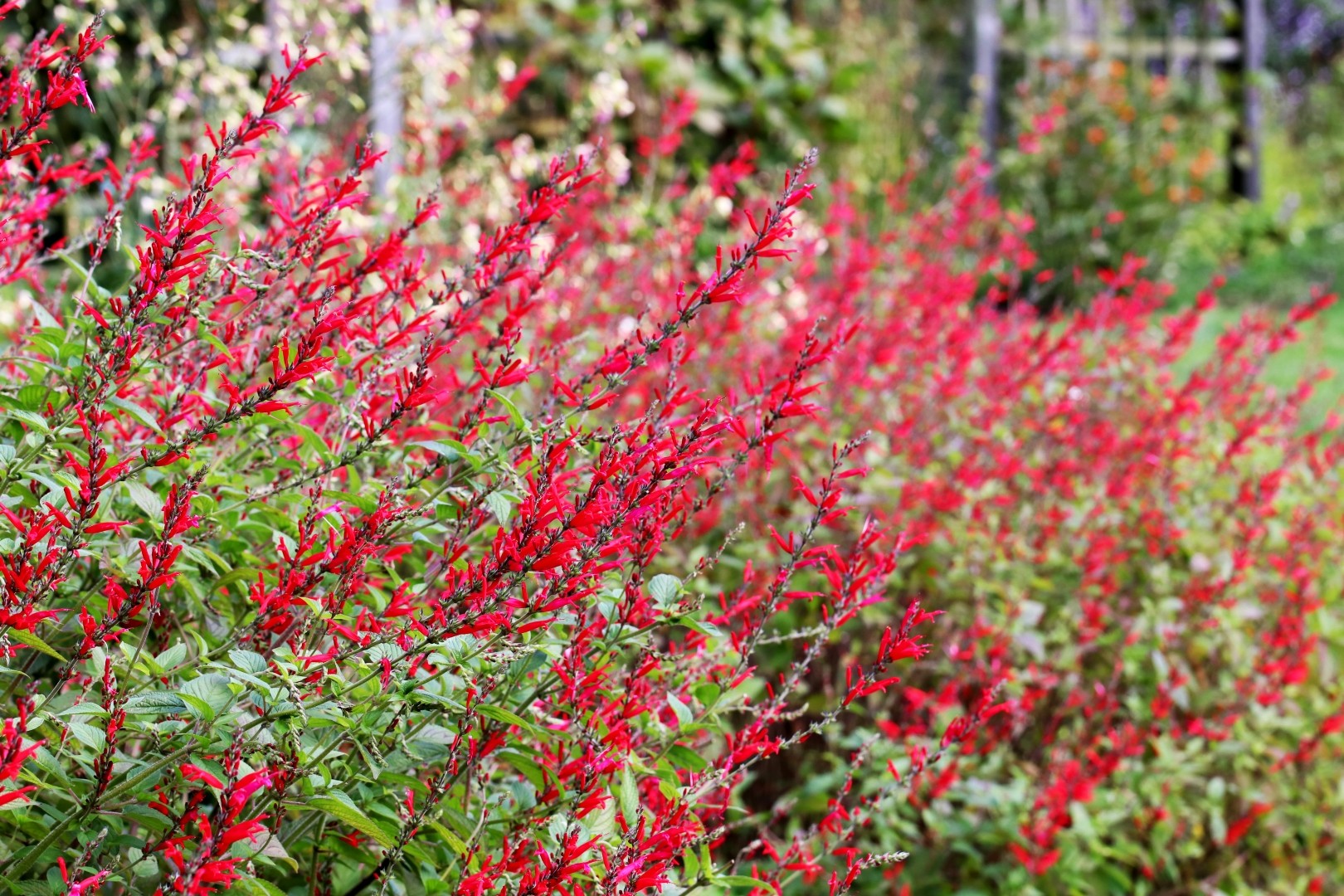
“Pineapple sage Flower …” from www.picturethisai.com and used with no modifications.
Plant Pineapple Sage in a sunny spot and watch as its vivid red blooms attract hummingbirds from all around. This herbaceous perennial is not only a visual delight but also a practical addition, as it can be used in teas and culinary creations. As an added bonus, its fragrant leaves can deter pests, making it a dual-purpose plant in your hummingbird haven.
Remember, while Pineapple Sage is hardy, it thrives best in warmer zones. In cooler climates, consider planting it in a pot that can be moved indoors when frost threatens. This way, you can enjoy its beauty and utility year-round, and so can the hummingbirds.
With thoughtful planning and the right plant selection, you can extend the attractiveness of your garden into the fall and provide a much-needed pitstop for hummingbirds on their migratory path.
Making It Happen: Setting Up Your Hummingbird Garden
Now that you know what plants to include in your hummingbird garden, let’s talk about how to bring your vision to life. Setting up a garden that attracts hummingbirds is a rewarding endeavor that requires some initial planning and preparation.
Tools of the Trade: What You’ll Need to Begin
Before you get your hands dirty, make sure you have the right tools for the job. A spade, garden fork, and trowel will be essential for planting. A watering can or hose with a gentle spray setting is important for keeping your plants hydrated without damaging them. Don’t forget a pair of gloves to protect your hands and a kneeling pad for comfort. With these tools at the ready, you’re all set to start planting your hummingbird paradise.
Garden Placement: Finding the Perfect Spot
Choosing the right location for your hummingbird garden is crucial. Look for a spot that receives plenty of sunlight, as most nectar-rich plants thrive in bright conditions. However, also consider including a few shaded areas where hummingbirds can rest and escape the midday heat. Ensure the site is sheltered from strong winds, which can make it difficult for hummingbirds to feed. If possible, position your garden near a window or patio where you can enjoy watching these enchanting birds visit.
When it comes to soil, well-drained, fertile ground is best. If your soil is poor, consider amending it with compost or planting in raised beds or containers. This not only improves soil quality but also makes your garden more accessible for maintenance.
Feeding Stations and Water Features: Extra Enticements
Beyond plants, hummingbirds are attracted to water, especially if it’s moving. Adding a small fountain or a drip water feature can provide them with fresh water to drink and bathe in, which is essential for their health. Consider placing a hummingbird feeder or two in your garden as well. These can supplement the nectar from flowers, especially early in the season before blooms are abundant or during dry spells.
When setting up feeders, keep them clean and filled with a simple sugar solution (four parts water to one part white sugar). Avoid using red dye in the solution, as it’s unnecessary and could be harmful to the birds. Place the feeders in the shade to prevent the sugar solution from fermenting quickly.
Frequently Asked Questions (FAQs)

Which flowers bloom all year round for hummingbirds?
While no single flower blooms all year round, you can plant a combination of perennials, annuals, and shrubs that will provide blooms in succession throughout the year. For example, combine early bloomers like Coral Bells with summer staples like Bee Balm and late bloomers like Pineapple Sage for a year-round hummingbird buffet.
How often should I change the water in my hummingbird feeder?
Change the water in your hummingbird feeder every two to three days, more often in hot weather, to prevent the growth of mold and bacteria. Always clean the feeder thoroughly before refilling.
Are there any plants that I should avoid in a hummingbird garden?
It’s best to avoid plants that are toxic to birds and those with flowers that are inaccessible to hummingbirds, such as double petal varieties. Also, steer clear of invasive species that could take over your garden and crowd out the nectar-rich plants.
Can I attract hummingbirds to my balcony with potted plants?
Absolutely! Even if you don’t have a yard, you can still attract hummingbirds with container gardening. Choose compact varieties of hummingbird-friendly plants and ensure your pots have good drainage. Hanging baskets with Fuchsia or Petunias are great for balconies.
What time of year is best for planting a hummingbird garden?
The best time to plant a hummingbird garden is in the spring after the last frost. This gives plants time to establish themselves and start blooming by the time hummingbirds return from migration. However, you can add plants throughout the growing season as long as you provide them with adequate water.
Creating a hummingbird garden is a delightful way to bring life and color to your backyard. With the right plants, a thoughtful layout, and a few extra touches, you can transform your outdoor space into a bustling hub for these fascinating creatures. Not only will you provide a haven for hummingbirds, but you’ll also have a front-row seat to one of nature’s most enchanting displays.



